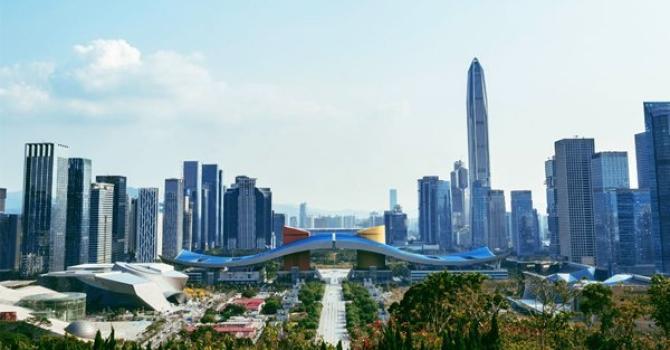SCMP: Greater Bay Area is a chance for Hong Kong to show it hasn’t lost its edge
Christine Loh says if Hong Kong is to capitalise on China’s development plan for the Pearl River Delta, the government must engage with sectors in which the city excels, such as universities and the maritime industry, to boost areas of specialisation
The Greater Bay Area plan, to be unveiled shortly, should be embraced and not feared. It will give Hong Kong the opportunity to showcase its strengths and a larger platform to stake its claim to innovation and excellence on many fronts.
The last thing Hongkongers should do is doubt themselves or think they have lost their competitive edge. The city is not “finished” and innovation is thriving in many areas.
Colonial Hong Kong is history. Hong Kong can carve a new role for itself if it wants to. The Greater Bay Area is an opportunity to make a mark on the national and global stage, for Hong Kong to weave a new compelling story for itself as a part of China.
The Greater Bay Area plan is not just a development agenda for the region comprising Hong Kong, Macau and Guangdong, but also a vital national plan for the region to play a leadership role in China’s overall development at a time of transition.
China has had a terrific run over the past four decades. The national government acknowledges the challenges it faces today – the old drivers of the economy through export production and investment have slowed significantly, and the workforce is ageing and peaking in size. Moreover, the nation is carrying considerable debt, and it has run up against trade and technology frictions with the West.
These problems have to be overcome for China to continue to grow at a healthy clip, otherwise it might fall into the middle-income trap, a term coined by the World Bank to refer to nations that get stuck at a middle level of economic development as they attempt to grow rich.
The plan is to push education, productivity, science, technology, innovation and management excellence, and this is where the Greater Bay Area comes in.
Hong Kong must contribute. There are clearly roles for our universities and the professional, financial, corporate, philanthropic and community sectors to play. The Hong Kong government should involve them in ways that it had not before. Let’s call this a purposeful “transformative engagement”.
The government has tended to keep non-government entities at arms’ length, under the loose rationale of “leaving the market to its own devices”. There is also fear of being accused of favouritism, if it seemed to be working closer with some sectors or companies.
There is a degree of specialisation among universities, for example. The government should work with all the universities as the scope of knowledge is broad and diverse, but not hesitate to focus on areas where there are unique strengths. The government should recognise each university’s pockets of excellence and view them strategically rather than administratively.
Officials also worry about risk – innovation may fail – and being criticised for backing the wrong idea. Indeed, officials can be so worried about so many things that they are criticised for not doing much.
These issues can be fixed if the bureaucracy can be infused with a new sense of purpose. Ministers must take engage more. Their convening power is an effective way to galvanise stakeholders. They must also play the political role of explaining choices to the public. They must not hesitate to explain how they wish to push innovation by engaging the best in Hong Kong for the benefit of the region as a whole.
Hong Kong has a solid tertiary education sector, where the institutions are both teaming up with mainland universities and taking a global approach through exchange programmes for students. Hong Kong academics are engaging in research in many areas where public and private funding is essential to enable to work at the cutting edge.
Guangdong has plenty of money to spend on research, often much more than Hong Kong. Hong Kong must be knowledgeable and skilful in choosing research and development areas where international and its own input adds real value. Hong Kong should also develop a narrative that resonates on the global stage.
Hong Kong professionals and managers have much to offer in terms of practical experience across many fields. There should be more opportunities to work across the border, especially if officials work with their counterparts to find areas where needs can be matched and met.
While commercial companies can take care of themselves, industry sectors need the government to convene dialogue for problem-solving and innovation. For example, the maritime sector is going through its own transformation nationally and internationally to achieve greater worker safety and environmental performance. Hong Kong’s port and shipping industry associations can be enormously helpful in setting high standards for the Greater Bay Area that could serve as an example for the rest of the nation.
Such a transformation requires political as well as industry vision. Dialogue and agreement between the chief executive and her counterparts in Guangdong and Macau is critical.
At the symposium to be held next Thursday in Hong Kong, it would be good for the leaders from Hong Kong, Guangdong and Macau to show their willingness to engage with a wide range of ideas and stakeholders to realise the creation of a regional economy that encourages innovation – both in technology and management – and that is open and international in outlook. Hong Kong has plenty of leadership opportunities.
Christine Loh is chief development strategist and adjunct professor at the Hong Kong University of Science and Technology’s Division of Environment and Sustainability.
This article appeared in the South China Morning Post print edition as: Greater things in sight
Link to SCMP article: https://www.scmp.com/comment/insight-opinion/hong-kong/article/2186087/greater-bay-area-chance-hong-kong-show-it-hasnt



